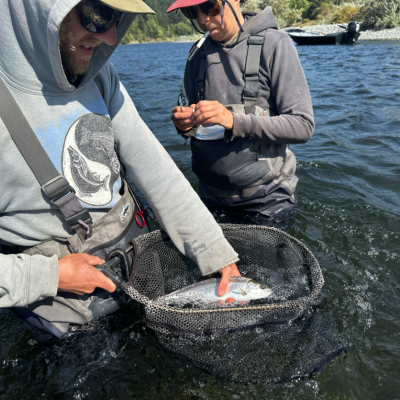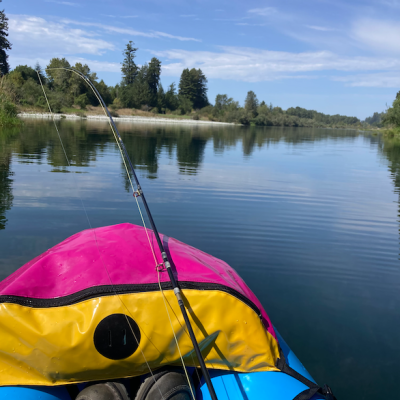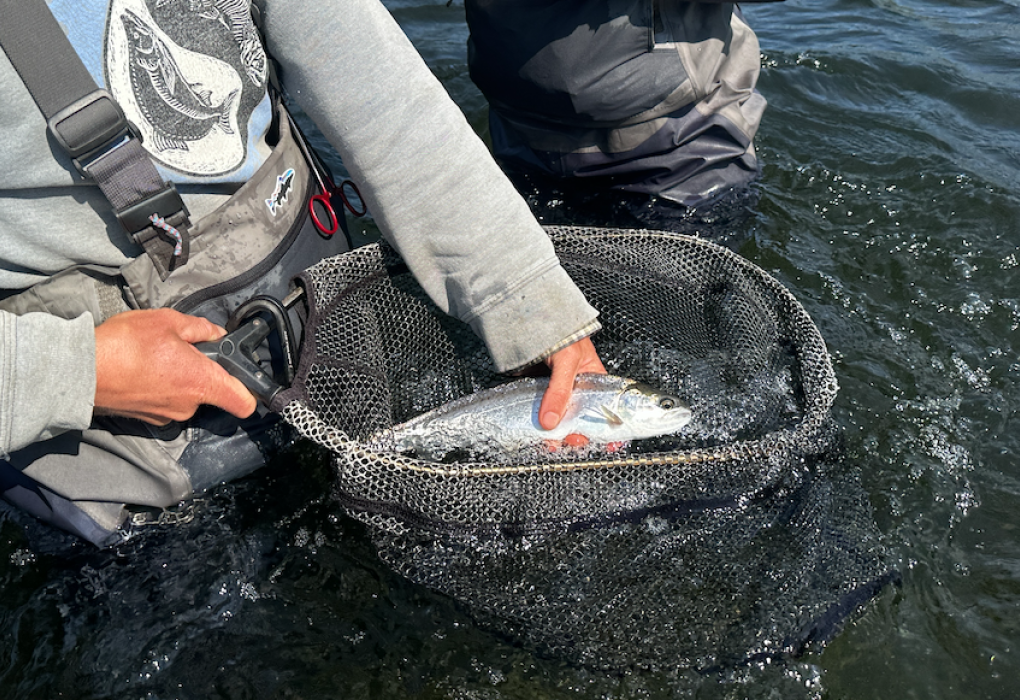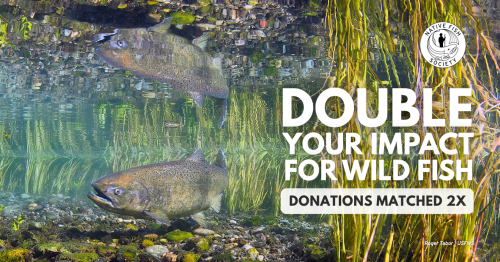StEELhead Discoveries Series - Part 21: October 2025
*This is Part 21 of an ongoing series on the campaign to Free the Eel and efforts to better understand and revive the iconic steelhead in the Pacific Northwest by Native Fish Society Fellow Samantha Kannry. View all parts of this series HERE. Additional parts and updates will be posted over the next several months. Stay tuned!
~ ~ ~ ~ ~ ~
In my writings for Native Fish Society on steelhead, I have not yet confessed to the fact that I am not a fisherman. I am a lover of rivers, canyons, rocks, and fish. I love to snorkel alongside fish, glide over them in a kayak, spy on their spawning activity from the bank, catch their young in little nets, and bask in the knowledge of their fluvial presence on rain-soaked mornings. And yet somehow the hook-and-line bug never quite latched onto me.
I have spent lots of time on rivers with people who are fishing fanatics and have even caught a few steelhead on spinners. I have had brief stints of friend-led fly-fishing lessons and was given my grandfather’s 4-weight fly rod and Sage reel after he passed (even though I am not a fisherman, I am the closest thing in my family to one). I have always thought that one of these years, the lure of fly-fishing would cast its spell on me, and I would find myself a willing victim. I would reframe my entire relationship with flowing water around hatches and runs, would spend winter evenings learning knots and bugs, would learn the sting of an errant hook in the finger, but that day has yet to arrive. It may be difficult to believe, but you can love fish, steelhead even, without loving fishing.
This lack of knowledge and experience with fishing has led me to feel less than prepared for our current research on half-pounders, as fishing was slated to be our primary method for sampling them. The half-pounder life history is only known to exist from the Eel River to the Rogue River, and on the Kamchatka Peninsula in Russia. In California, they overlap with the southern extent of both summer-steelhead and Coastal Cutthroat Trout (our other two research subjects).
The purpose of this research is to further the understanding of what half-pounders are, and where and when they are migrating. Using new genetic markers, we will look at their adult migration type (summer, winter, fall), their tendency to stray into non-natal streams, and how they are distributed in watersheds throughout the year. We began collecting tissue samples from half-pounders in 2024, but have expanded the scope and size of our study this year.
When the water cooled sufficiently and we heard reports of half-pounders in the lower Klamath River, we were ready. We gathered all the sampling gear and a little spinning rod for me (now is not the time to learn how to fly fish!). I tried to maintain proper fishing etiquette, got my own lures unstuck so others could keep fishing, and was ready to sample any fish caught.
We were fortunate to have local guides take us around in their boats and show us the best spots for catching half-pounders on the Klamath and Rogue. Warm, autumn days spent on a river are something to revel in. I jested that maybe I do love fishing. Standing in the recently undammed waters of the Klamath near the confluence of a slate-blue creek under rainbow-clad drizzle, tossing a shiny spoon across the wide run, I thought I might.
If you are interested in assisting in half-pounder sampling for this research, feel free to contact me. We plan to continue at least through 2026.


~~~~~
About the Author:
Samantha Kannry has been monitoring, studying, and swimming with summer-run steelhead in the Eel River and other rivers of Northwestern California for the past thirteen years. She joined NFS as a volunteer in 2015, then became a fish genetics fellow in 2020.
While it has been clear to the native peoples of the region since time immemorial that summer-run steelhead and the congeneric spring Chinook are separate populations, not everyone else sees it so clearly. Her research has focused on using conservation genetic tools to elucidate the distinction between summer and winter-run steelhead.
When not minking (a combination of hiking, swimming, snorkeling, sliding, shimmying, and boulder jumping) down rivers, she is usually growing and eating fruit, moving manure at Caudal Fin Farm, or bike touring distances large and small. All working towards re-establishing the inherent continuity between rivers, land, and people.
Read StEELhead Discoveries Part 1 - 20 HERE.

